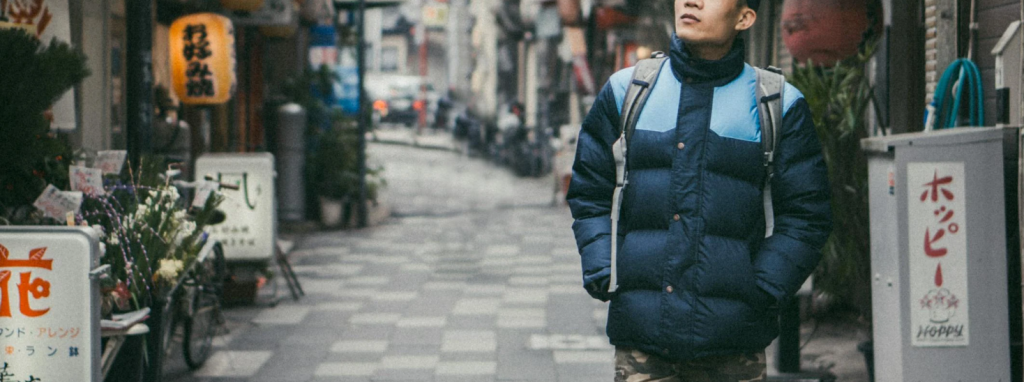
Introduction: Why Outerwear Comparisons Matter
When winter approaches, the search for the perfect jacket becomes a serious mission. Two names dominate conversations: The North Face and Canada Goose. One is associated with technical, performance-driven outerwear for climbers and explorers; the other with luxury parkas built for arctic expeditions and urban elites alike. But beyond branding, how do they compare in warmth, weight, and ethical responsibility? Let’s put them to the test.
Brand Overview
The North Face: Performance-Driven Heritage
Founded in 1966 in San Francisco, The North Face began as a retailer for mountaineering gear. Over the decades, it became a global leader in technical apparel, sponsoring expeditions to Everest and Antarctica. Today, it balances performance outerwear with lifestyle collections, making it equally at home in the mountains and the city.
Canada Goose: Luxury Meets Arctic Functionality
Canada Goose, established in 1957 in Toronto, made its name crafting extreme-weather parkas for Canadian rangers and arctic scientists. Its coats are engineered for the harshest climates, but they’ve also become a luxury fashion symbol, spotted on celebrities from Drake to Emma Stone. Their bold Arctic Program patch is as much about status as survival.
Warmth and Insulation
Materials and Fill Power
Warmth comes down to insulation.
- The North Face often uses synthetic insulation (like ThermoBall) alongside goose down. Synthetic fill is lightweight and performs better in wet conditions. Their down jackets typically range from 550 to 700 fill power.
- Canada Goose relies heavily on high-quality white duck down with fill power often exceeding 750. This translates into superior loft, trapping more heat.
Verdict: Canada Goose jackets are generally warmer, but The North Face offers a better balance of insulation types for varied climates.
Real-World Cold Weather Testing
In sub-zero conditions, Canada Goose coats hold the edge, keeping wearers warm at -20°C or colder without much layering. The North Face jackets are versatile but may require mid-layers for extreme cold.
Analogy time: if Canada Goose is like carrying a portable fireplace, The North Face is more like a flexible thermostat—you’ll need to adjust depending on the environment.
Wind and Moisture Resistance
Both brands integrate durable water-repellent coatings and windproof fabrics. The North Face excels in waterproof shells like the FUTURELIGHT line, designed for mountaineers. Canada Goose focuses more on wind and cold than heavy rain, meaning you might need an umbrella in wet conditions.
Weight and Packability
Everyday Wear and Mobility
The North Face emphasizes mobility and lightweight wearability, especially in its Summit Series or ThermoBall line. Canada Goose jackets, while warm, tend to be heavier and bulkier—more suited to standing outside at a hockey game than hiking uphill.
Travel and Storage Considerations
For travelers, The North Face wins. Many of their insulated jackets can compress into small bags. Canada Goose coats are notoriously bulky, making them less ideal for stuffing into overhead compartments.
Durability and Longevity
Construction Quality
Canada Goose jackets are built like tanks: reinforced stitching, premium fabrics, and fur-lined hoods designed to withstand blizzards. The North Face, while durable, leans slightly more on lightweight designs, which can sacrifice toughness over decades of wear.
Repair and Warranty Policies
Both brands offer strong warranties. The North Face has its lifetime guarantee, repairing manufacturing defects. Canada Goose also provides lifetime warranties but is stricter on wear-and-tear coverage. Both promote repair over replacement, aligning with sustainability efforts.
Ethical and Sustainability Considerations
Animal Welfare: Down and Fur Controversy
Canada Goose has faced criticism for using coyote fur and goose down. However, in 2021, they announced a phase-out of fur trim, aiming to stop using it entirely. The North Face avoids fur altogether and uses Responsible Down Standard (RDS)-certified down.
Corporate Sustainability Initiatives
The North Face pushes hard on sustainability, with its Renewed program that refurbishes used gear. Canada Goose has launched its Sustainable Impact Strategy, pledging carbon neutrality by 2025.
Transparency and Certifications
The North Face consistently highlights third-party certifications (RDS, bluesign®), while Canada Goose is improving transparency but still plays catch-up.
Verdict: The North Face takes the lead on sustainability and ethical responsibility.
Style and Wearability
Urban Fashion vs. Expedition Utility
Canada Goose jackets are instantly recognizable. They’re luxury symbols as much as winter gear, particularly in global fashion capitals. The North Face is more understated, appealing to those who want performance without the status statement.
Seasonal Versatility
The North Face’s range is broader—lightweight puffers for fall, shells for spring, and heavy down for winter. Canada Goose primarily shines in deep winter.
Price and Value for Money
Cost vs. Performance
- The North Face: $200–$500 for most insulated jackets.
- Canada Goose: $1,000–$1,600 for parkas.
You’re paying three to five times more for Canada Goose. While its warmth is unmatched, some argue you’re buying into branding as much as performance.
Resale Market Trends
Canada Goose maintains strong resale value, with some models retaining over 70% of their price. The North Face resells well too, especially collaborations (like Supreme x TNF), but depreciation is faster.
Consumer Insights and Market Position
Who Buys The North Face?
- Outdoor enthusiasts
- Students and urban commuters
- Eco-conscious consumers seeking versatility
Who Buys Canada Goose?
- Affluent city-dwellers
- Fashion-forward individuals
- People living in or traveling to extreme climates
Conclusion: Which Brand Truly Wins?
If you need ultimate warmth and luxury appeal, Canada Goose wins. If you want versatility, sustainability, and affordability, The North Face is the smarter choice.
The real question is this: Do you want your coat to be a tool or a statement?

FAQs
1. Which brand is warmer, The North Face or Canada Goose?
Canada Goose is generally warmer, thanks to higher fill power and heavier insulation.
2. Are Canada Goose jackets worth the high price?
Yes, if you need extreme warmth and value resale potential. Otherwise, The North Face offers better cost-performance.
3. Is The North Face more sustainable than Canada Goose?
Yes, The North Face has stronger sustainability initiatives and avoids fur use.
4. Which is better for travel, The North Face or Canada Goose?
The North Face is lighter and more packable, making it better for frequent travelers.
5. Do both brands offer lifetime warranties?
Yes, but The North Face has a more flexible repair policy, while Canada Goose is stricter.





